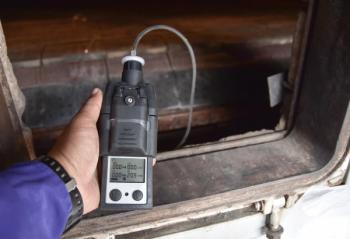
Deep Learning Meets Terahertz Spectroscopy: Breakthrough Model Achieves 99% Accuracy in Nucleobase Identification
In a recent study, a team of researchers from Peking University and the National Key Laboratory of Advanced Micro and Nano Manufacture Technology have proposed a new method for identifying DNA nucleobases using a fusion of terahertz time-domain spectroscopy (THz-TDS) and advanced deep learning techniques.
This video was made with the help of NotebookLM.
In a recent study, a team of researchers from Peking University and the National Key Laboratory of Advanced Micro and Nano Manufacture Technology have proposed a new method for identifying DNA nucleobases using a fusion of terahertz time-domain spectroscopy (THz-TDS) and advanced deep learning techniques. This study, which was published in the journal Sensors and Actuators A: Physical, shows how the THz-TDS method improves upon traditional analytical methods (1).
One of the biggest challenges in molecular biology currently is how to best distinguish nucleobases accurately. Nucleobases are defined as the molecular building blocks of DNA, whose subtle spectral differences are notoriously difficult to resolve (1,2).
As a result, current computational and spectroscopic approaches are not adequately able to interpret the complex, overlapping vibrational signals in terahertz spectra caused by intricate intermolecular interactions and low-frequency vibrational modes. Therefore, the researchers sought to build a method that could overcome these limitations. The research team chose to integrate THz-TDS with a custom-designed multi-scale convolutional neural network featuring a convolutional block attention module and long short-term memory (MsCNN-CBAM-LSTM) (1). This hybrid architecture combines multi-scale feature extraction, attention-based enhancement, and temporal modeling, which allowed the system to efficiently process and interpret the intricate terahertz spectral fingerprints of nucleobases (1).
The terahertz system itself operates across a spectral range of 0.2–2 THz, with a resolution finer than 6 GHz and a dynamic range of 70 dB (1). Utilizing a femtosecond laser source centered at 800 nm with a pulse width of approximately 100 fs, the researchers captured time-domain waveforms of the THz electric field, which were then converted into frequency-domain data using Fourier transform techniques.
Ultimately, the researchers demonstrated that their method 99.17% accuracy rate, surpassing existing analytical models in precision and efficiency (1). As a result, the proposed model demonstrated extraordinary performance by effectively enhancing the feature representation of nucleobase spectra and capturing temporal dependencies that conventional algorithms often neglect. By combining the strengths of spectroscopy and artificial intelligence, the study establishes a powerful, nondestructive, and intelligent framework for biochemical analysis.
References
- Chen, Y.; Meng, T.; Wu, M.; et al. Nucleobase Discrimination Based on Terahertz Spectroscopy Using Multi-scale Convolutional Neural Network with Convolutional Block Attention Module and Long Short-term Memory. Sens. Act. A: Phys. 2025, 387, 116434. DOI:
10.1016/j.sna.116434 - NASA Ames Research Center, Astrochem.org. Available at:
https://www.astrochem.org/sci/Nucleobases.php (accessed 2025-10-17).
Newsletter
Get essential updates on the latest spectroscopy technologies, regulatory standards, and best practices—subscribe today to Spectroscopy.





